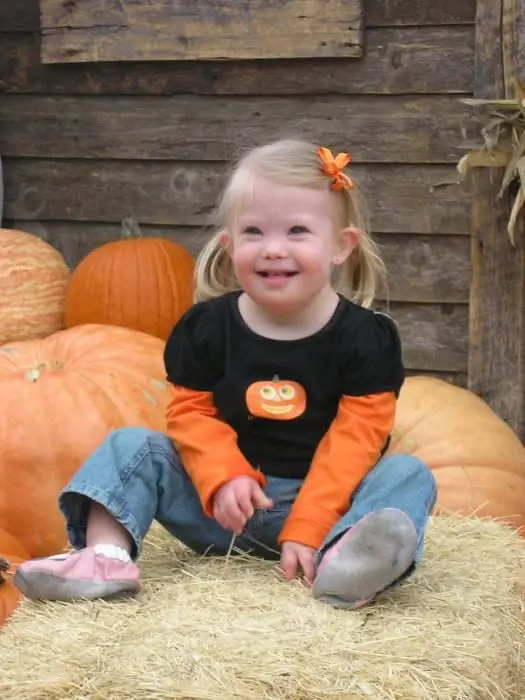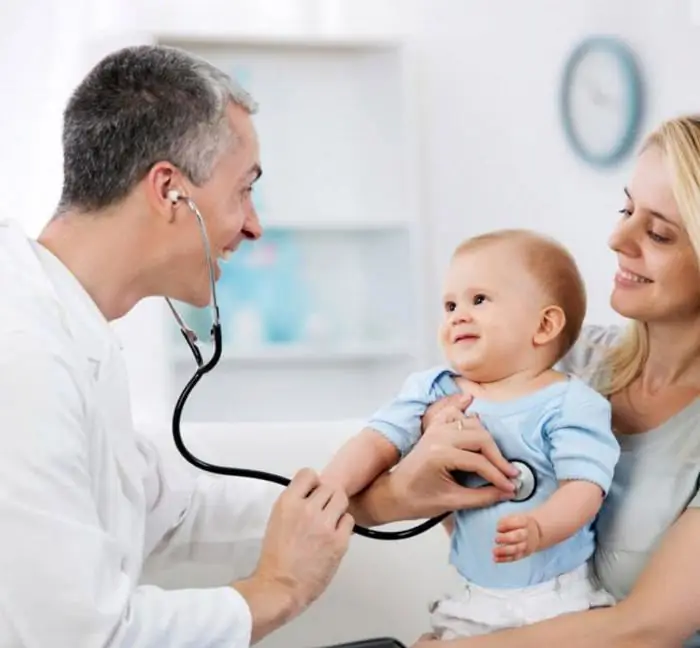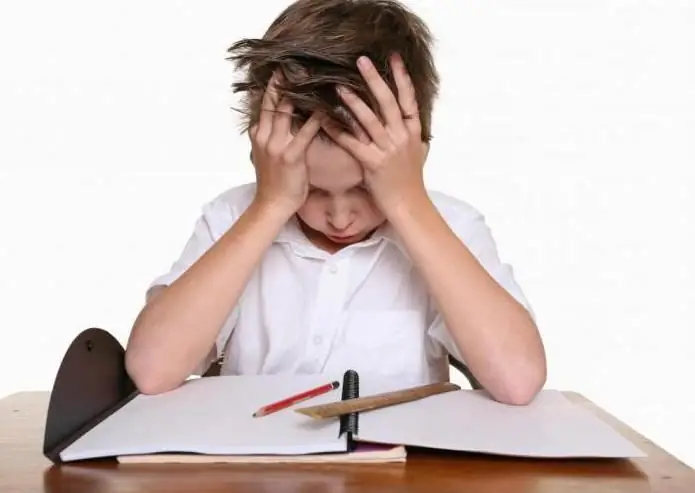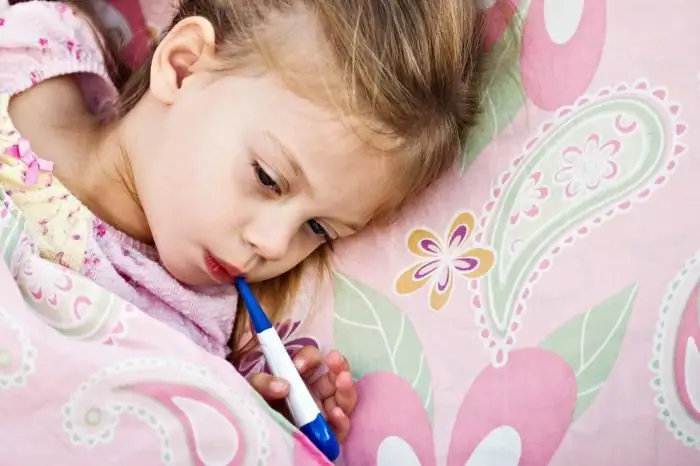2025 Author: Priscilla Miln | [email protected]. Last modified: 2025-01-22 17:55:21
Children are much more prone to viral diseases accompanied by high body temperature than adults. Some babies develop febrile seizures when they have a fever. They are very scary for new parents. And at the right moment, mothers get lost and are unable to carry out the first necessary aid. But are they as dangerous as they seem? And how to give the child the right help with convulsions? To get answers to these questions, you first need to understand the cause of this phenomenon.
Why do children have seizures?
Causes of seizures in children can be very different. These are harmful effects even in the prenatal period, and complications during childbirth, and craniocerebral injuries. But still, the most common cause of their occurrence is high temperature. Convulsions in a child in this case are called febrile. Occur in babies aged six months to five years.

Usually they accompany viral diseases or appear against the background of temperature during teething or after vaccination. At the same time, manychildren have seizures only once. Note that they can also be hereditary. If older relatives had convulsions in infancy, then with a high degree of probability the baby will also have a tendency to them.
Symptoms of seizures in a child
Convulsions at a temperature in a child are usually accompanied by a sharp tilting of the head, all the muscles of the baby's body are tense, and the limbs are stretched. Eyes often roll back, and foam appears on the lips. The teeth are clenched. Convulsions occur immediately in the whole body. Sometimes enuresis or involuntary defecation is possible during an attack. Often at the same time, the child loses consciousness, and after it ends, he does not remember what happened to him. Symptoms of febrile seizures can last from a few seconds to ten to fifteen minutes.

First aid needed
How should parents behave if a child has an attack due to a high temperature? What to do with cramps, and what should not be done in any case?

First, you should calm down and call a doctor, because panic cannot help the baby in any way. The most important thing is to ensure the safety of the child, that is, to prevent him from hitting and to remove objects that can injure him. The child must be freed from excess clothing that restricts movement, and laid on its side. You need to constantly be near the baby, carefully monitoring his condition.
If the child starts to turn blue and breathing becomes intermittent, you can spray on his facecold water. Be sure to remember that during an attack you can not put or pour anything into your mouth, as the child may suffocate. For the same reason, in order to bring down the temperature during an attack, the child should not be given oral syrups or tablets, only the use of suppositories is allowed.
It is very important to note the duration of the seizure, as well as to remember exactly how the convulsions manifested themselves. In the future, this information will help the doctor.
Do I need medication?
Convulsions at a temperature in a child usually do not pose a serious danger and go away on their own. According to doctors, if attacks occur only against a background of high temperature and do not last more than 15 minutes, they do not require any special treatment. As an additional measure, doctors sometimes prescribe calcium supplements or sedatives. In any case, if a child has seizures, this is a definite reason to consult a pediatrician and possibly a neurologist.

When should I be concerned?
Usually, convulsions at a temperature in a child stop on their own without any consequences. However, in some cases, they may indicate the presence of serious neurological diseases. There are signs that parents should pay special attention to:
- convulsions occur without fever;
- attack covers only half of the body;
- convulsions occur in children under the age of six months and after five-six years old.
In these cases, it is necessary to immediately consult a qualified specialist.

Prevention of unwanted seizures
You can prevent muscle cramps in children with the help of special preparations. However, they are prescribed only for prolonged and recurring seizures, if there is a risk of developing epilepsy. But given that the likelihood of this is extremely small, and such drugs cause serious side effects, such measures are extremely rarely taken by neurologists.
Usually, to prevent seizures, it is enough to follow some simple rules. If a child has had a seizure at least once, there is a chance of its recurrence. Therefore, it is necessary to prevent a significant increase in body temperature. It should be measured frequently and, possibly, antipyretics should be taken routinely. You also need to avoid overheating. For children prone to seizures, it is better not to sunbathe for a long time in the sun, not to go to the sauna. It is very important to be able to properly help the baby when the temperature rises.
How to help a child with a high fever?
In young children, the temperature rises at lightning speed. Therefore, it is necessary to measure it more often in order to quickly take action if necessary. Especially when it comes to babies prone to seizures.

But what to do if the moment is missed and the child is already on fire? How to bring down the temperature of 39 and above? In the case of such a strong fever, special medicines cannot be dispensed with. The safest and most effectivedrugs used in children are considered "Paracetamol" and "Ibuprofen". They are available in a variety of dosage forms, so each child can choose the best option.
How to bring down a high temperature without drugs?
However, you can't rely on medication alone. The most important thing is to provide the baby with the right conditions. At high temperatures, the body rapidly loses fluid, so the child needs a plentiful warm drink. The best option would be compote or fruit drink, although in this case it is not so important what exactly to give the child: both tea and mineral water will do. The main thing is that there is enough liquid. The air in the children's room should be cool, but at the same time you need to make sure that the child does not freeze.
Often parents are interested in how to bring down the temperature of 39 without the use of drugs? A common method is rubbing with alcohol or vinegar. But under no circumstances should this be done! Such rubbing is extremely dangerous and can lead to serious poisoning of the child's body.

You can not use and heating pads filled with ice, as well as cold wraps. This can cause a spasm of the vessels of the skin: then it “cools down”, but the temperature of the internal organs continues to rise. It is very dangerous. It is best to periodically lightly wipe the baby with a handkerchief dipped in warm water. In this case, the child should not freeze. With this method, you can achieve a significant decrease in body temperature.
Thus, convulsions at a temperature in a child, although they are quitefrightening symptom, usually do not carry a serious danger to the child's body. The main thing is to know how to help the baby in such cases.
Recommended:
Signs of Down syndrome during pregnancy. Ways to detect Down syndrome during pregnancy

For the first time, the signs of children born with this deviation were scientifically described in 1866 by the Englishman John Down. A he althy baby has 46 chromosomes, while someone with Down syndrome has 47. And this slows down the physical as well as mental development of the newborn
How to bring down a high temperature in a child: advice from pediatricians

High temperature in a child is a sign that the body is fighting the disease. That is why, while it is below 38 degrees, it is not worth knocking it down at all. But what if the high temperature does not go away? How to help the baby?
At what temperature should I call an ambulance for a child? At what temperature in the baby should I call an ambulance?

Adults can afford not to go to the doctor when the temperature rises, but it is unacceptable for parents to ignore a fever in a child, since the decrease in child mortality in our century was due to the achievements of modern medicine, which provides timely assistance to small patients
Child does not study well - what to do? How to help a child if he does not study well? How to teach a child to learn

School years are, without any doubt, a very important stage in the life of every person, but at the same time quite difficult. Only a small part of children is able to bring home only excellent grades for the entire period of their stay in the walls of an educational institution
How to bring down the temperature during pregnancy folk remedies?

During pregnancy, the female body is exposed to tremendous stress and needs additional protection from aggressive external factors. How to protect yourself from a cold and help your body cope with it in a short time, provided that almost all medications are under the strictest ban? How to bring down the temperature during pregnancy? The answers to these questions can be found by discovering alternative treatment

